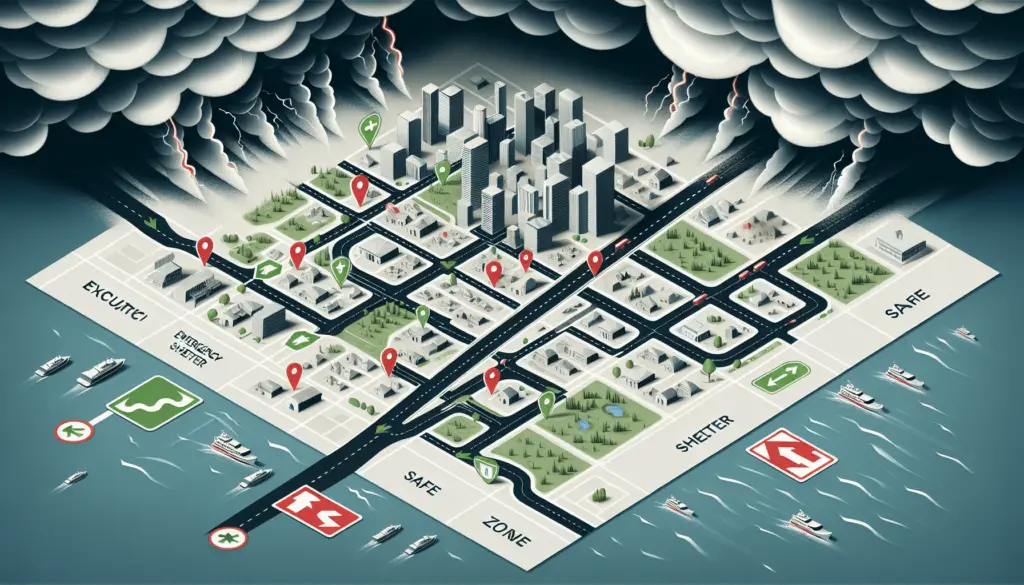Are You Prepared for Sudden Environmental Catastrophes?
Have you ever considered what you would do if faced with a sudden environmental catastrophe? Whether it’s a natural disaster, a chemical spill, or any other unexpected event, having a bug-out plan in place can make all the difference in ensuring your safety and survival. In this article, we will discuss the importance of crafting a bug-out plan for sudden environmental catastrophes and provide you with all the information you need to be prepared.

Understanding Bug-Out Plans
A bug-out plan is a strategic plan that outlines what you will do in the event of an emergency or disaster that requires you to evacuate your home or current location. It includes important details such as evacuation routes, communication methods, emergency contacts, essential supplies, and alternate safe locations. Having a bug-out plan can help you stay calm and focused during a crisis and increase your chances of staying safe and surviving.
Why You Need a Bug-Out Plan
No one likes to think about worst-case scenarios, but it’s crucial to be prepared for the unexpected. Sudden environmental catastrophes can strike at any time, and having a bug-out plan in place can mean the difference between life and death. By creating a bug-out plan, you are taking proactive steps to protect yourself, your loved ones, and your pets in the event of an emergency.
Crafting Your Bug-Out Plan
Crafting a bug-out plan requires careful consideration and attention to detail. Here are some key steps to help you create a comprehensive bug-out plan that will keep you prepared and safe in the event of a sudden environmental catastrophe:
Step 1: Identify Potential Threats
The first step in crafting a bug-out plan is to identify the potential threats that you may face in your area. These threats can include natural disasters such as hurricanes, earthquakes, wildfires, or floods, as well as man-made disasters such as chemical spills, nuclear accidents, or terrorist attacks. By understanding the specific risks in your location, you can better prepare for them and create a plan that addresses those threats.
Step 2: Determine Evacuation Routes
Once you have identified the potential threats in your area, the next step is to determine the best evacuation routes to get to safety quickly and efficiently. Identify multiple evacuation routes, including primary and secondary routes, in case one route is blocked or compromised. Consider different modes of transportation, such as walking, driving, or biking, depending on the circumstances of the emergency.
Step 3: Establish Communication Methods
During an emergency, communication is key to staying safe and informed. Establish communication methods with your family members, friends, and emergency contacts to keep everyone updated on your whereabouts and safety status. Consider using a combination of text messages, phone calls, social media, and emergency alert systems to stay connected and informed during a crisis.
Step 4: Prepare Emergency Kits
Having an emergency kit ready to go is essential for your bug-out plan. Your emergency kit should include essential supplies such as food, water, medications, first aid supplies, clothing, personal hygiene items, flashlight, batteries, and any other necessities for at least 72 hours. Customize your emergency kit based on your specific needs, such as pet supplies or specialized medications.
Step 5: Identify Safe Locations
In addition to evacuation routes, it’s crucial to identify safe locations where you can seek shelter in the event of an emergency. Safe locations can include designated evacuation centers, hotels, friends’ or family members’ homes, or public buildings such as schools or community centers. Choose multiple safe locations near your home and workplace to ensure you have options depending on the circumstances.
Step 6: Review and Practice Your Plan
Once you have crafted your bug-out plan, it’s essential to review and practice it regularly to ensure that you are familiar with the details and can act quickly in an emergency. Review your plan with your family members, discuss different scenarios, and conduct practice drills to test your evacuation routes, communication methods, and emergency procedures. By practicing your plan, you can increase your confidence and readiness in case of a sudden environmental catastrophe.
Conclusion
Crafting a bug-out plan for sudden environmental catastrophes is a vital step in ensuring your safety and survival during emergencies. By taking proactive steps to identify potential threats, create evacuation routes, establish communication methods, prepare emergency kits, identify safe locations, and review and practice your plan, you can be better prepared and equipped to handle any unexpected event. Remember, being prepared is the best defense against uncertainty, so take the time to craft your bug-out plan today and stay safe in the face of sudden environmental catastrophes.

